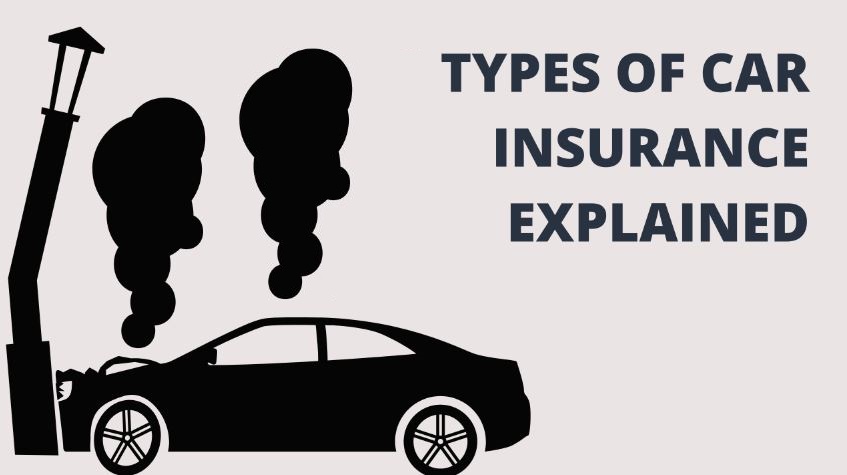Car insurance is a crucial aspect of owning and operating a vehicle. It provides financial protection in the event of accidents, theft, or other unforeseen incidents involving your car.
Understanding the different types of car insurance coverage available is essential for ensuring adequate protection and compliance with legal requirements.

What is Car Insurance?
Car insurance is a contract between you and an insurance company, where you pay a premium in exchange for coverage against specified risks. In the event of an accident or loss, the insurance company agrees to compensate you according to the terms of the policy.
Importance of Having Car Insurance
Having car insurance is not only a legal requirement in most places but also a practical necessity. It protects you financially from liabilities and damages that may arise from accidents, theft, vandalism, or natural disasters.
Without proper insurance coverage, you could be personally responsible for significant expenses, including medical bills, vehicle repairs, and legal fees.
Types of Car Insurance Coverage
Liability Coverage
Liability coverage is the foundation of most car insurance policies and typically consists of two main components: bodily injury liability and property damage liability.
Bodily Injury Liability
Bodily injury liability coverage pays for medical expenses, lost wages, and legal fees resulting from injuries or death caused to other people in an accident where you are at fault.
Property Damage Liability
Property damage liability coverage compensates for the repair or replacement of other people’s property, such as vehicles, buildings, or infrastructure, that you damage in an accident.
Collision Coverage
Collision coverage reimburses you for damage to your vehicle resulting from a collision with another vehicle or object, regardless of fault. It covers repair costs or the actual cash value of your car if it’s totaled.
Comprehensive Coverage
Comprehensive coverage protects your vehicle from non-collision related damages, including theft, vandalism, fire, hail, flood, or falling objects. It provides reimbursement for repairs or the replacement cost of your car.
Uninsured/Underinsured Motorist Coverage
Uninsured and underinsured motorist coverage safeguards you in the event of an accident with a driver who lacks insurance or has insufficient coverage to pay for your damages or injuries.
Personal Injury Protection (PIP)
Personal injury protection, also known as no-fault insurance, covers medical expenses and lost wages for you and your passengers, regardless of fault, in the event of an accident.
Medical Payments Coverage
Medical payments coverage reimburses medical expenses for you and your passengers, regardless of fault, resulting from injuries sustained in a car accident.
Factors Affecting Car Insurance Rates
Several factors influence car insurance rates, including:
Age and Gender
Younger drivers and male drivers typically face higher insurance premiums due to statistically higher accident rates.
Driving Record
A clean driving record with no accidents or traffic violations usually results in lower insurance rates, while a history of accidents or tickets can increase premiums.
Vehicle Type
The make, model, and age of your vehicle affect insurance rates, with newer, more expensive cars generally costing more to insure.
Location
Where you live and park your car plays a significant role in determining insurance rates, as areas with higher crime rates or traffic congestion may pose greater risks.
Credit Score
In some states, insurance companies use credit scores as a factor in calculating premiums, as individuals with higher credit scores are deemed less risky to insure.
Choosing the Right Car Insurance Policy
Assessing Coverage Needs
Evaluate your individual needs and risk factors to determine the appropriate level of coverage required to adequately protect yourself and your assets.
Comparing Quotes
Shop around and obtain quotes from multiple insurance providers to compare prices, coverage options, and discounts available.
Considering Deductibles and Limits
Balance your premium costs with deductible amounts and coverage limits to find a policy that offers the best value and meets your financial constraints.
Reviewing Additional Benefits
Look for additional benefits or add-on coverages, such as roadside assistance, rental car reimbursement, or gap insurance, that may enhance your policy’s value.
Conclusion
Choosing the right type of car insurance coverage is essential for protecting yourself, your passengers, and your vehicle from financial losses resulting from accidents or other unforeseen events. By understanding the different types of coverage available and assessing your individual needs, you can select a policy that provides adequate protection at an affordable price.
FAQs
Why do I need car insurance if I’m a safe driver?
Car insurance provides financial protection not only for your own mistakes but also for the actions of other drivers on the road. Even safe drivers can encounter unforeseen circumstances or accidents caused by others.
Can I drive without car insurance?
In most jurisdictions, driving without car insurance is illegal and can result in fines, license suspension, or even criminal charges. It’s essential to have at least the minimum required coverage to comply with legal requirements.
How can I lower my car insurance premiums?
You can lower your car insurance premiums by maintaining a clean driving record, choosing a higher deductible, bundling policies, qualifying for discounts, and driving a safer vehicle.
Does car insurance cover rental cars?
Depending on your policy, car insurance may provide coverage for rental cars in certain situations, such as when your vehicle is being repaired after an accident. However, it’s essential to check your policy or purchase additional rental car insurance for comprehensive coverage.
What should I do if I’m involved in a car accident?
If you’re involved in a car accident, prioritize your safety and the safety of others involved. Exchange information with the other driver(s), document the scene, and notify your insurance company as soon as possible to initiate the claims process.






